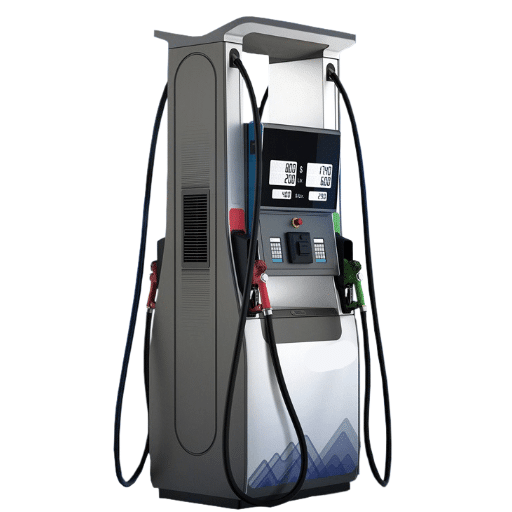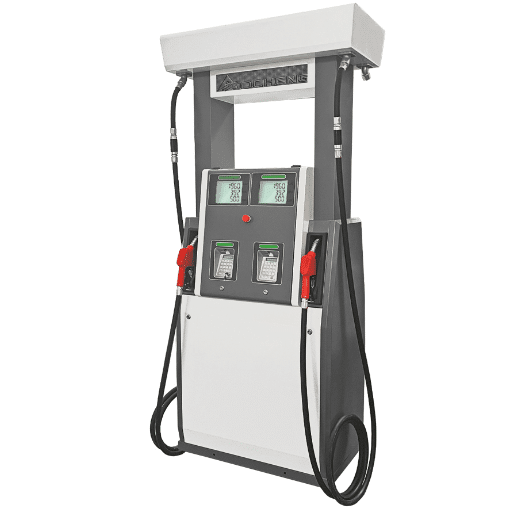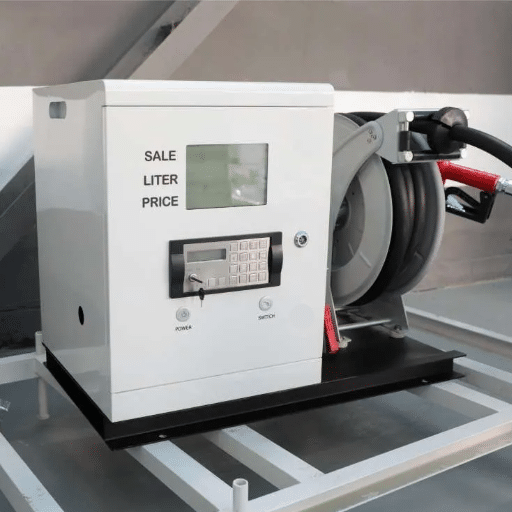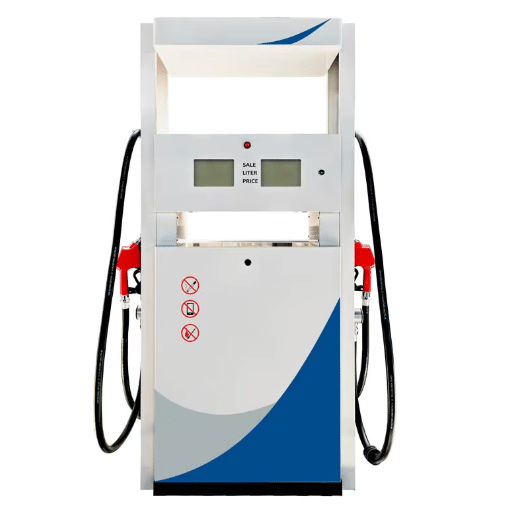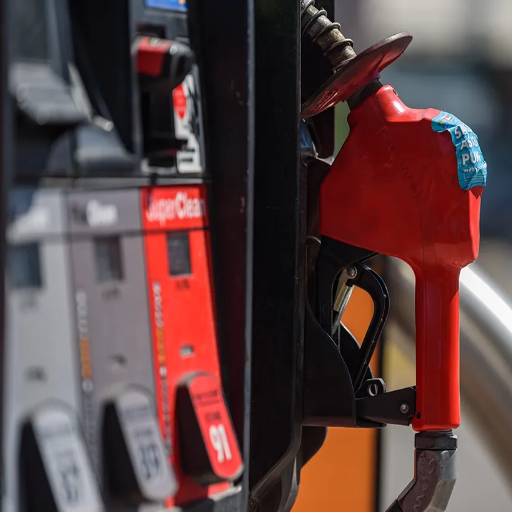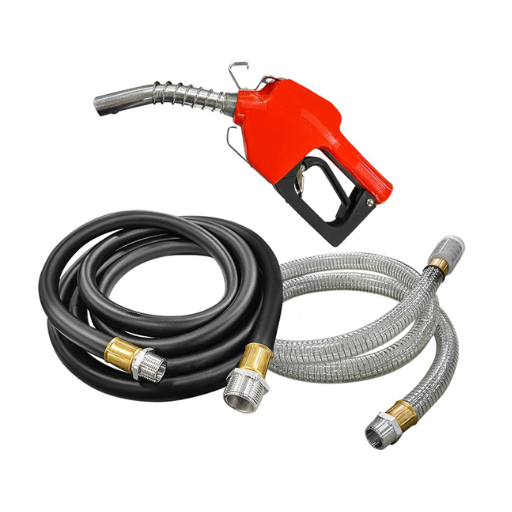Starting a garage sale may look easy to the outsider, when in fact, there are too many different streams of revenue and how much profit they can yield, which puts a gas station in the category of a very complex business venture. Quite a few ask, “So how much does a gas station actually make?” This article goes to great depths to convey the financial aspect of this business set-up and to unveil the major components influencing the revenue of a gas station-from selling fuel to convenience store merchandise to other side services, such as the car wash. If you are an aspiring investor contemplating entry into the business or just somebody curious about how these establishments earn money, then this post will give you an accurate and detailed view of the profitability of gas stations. Picturing the income made by the different revenue streams and the operational difficulties will put in perspective what drives income and what it takes to tread in this necessary yet highly competitive sector.
Overview of Gas Stations

Gas stations are essential business entities refueling vehicles. They may also operate convenience stores along with other potential services, such as a car wash. The main ideas behind gas stations are the selling of gasoline, diesel, and other petroleum products. Products come from refineries or distributors who set prices depending highly on the cost of crude, transportation, and taxes. Further revenue streams of the station comprise non-fuel sales of food, drinks, and car products in their convenience stores. Higher revenue can be generated if price strategies are well-implemented with high-traffic locations and by ensuring efficient operations to keep costs minimized.
What is a Gas Station?
Put simply, a gas station is a facility where fuel, such as gasoline and diesel, is sold for motor vehicles. These stations have pump facilities that allow quick refueling, storage tanks for holding fuel, and payment systems to enable quick and efficient pumping. Most modern-day gas stations operate as convenience hubs, offering a variety of services other than just fuel; these services may include car washes, repairs, maintenance, and even retail items such as snacks and auto accessories. Essentially, the gas station business model is about being accessible to motorists, providing efficient service, and raising a secondary method of income through the sale of non-fuel products.
Types of Gas Stations
Gas stations can be subclassified into many categories based on ownership, function, and services that they offer:
Retail Gas Stations: Retail gas stations are the common type and can be operated by major fuel brands such as Shell, Exxon, or BP. At least, providing its core service of selling branded fuel, the station can also offer some services like convenience stores, air pumps, or even some vehicle repairs. These stations are either company-owned or franchised.
Independent Gas Stations: Independent gas stations, not affiliated directly with the major fuel brands, usually have unbranded or cheaper fuel being sold out-of-market. They cater to those who are price-conscious buyers. Additionally, the services provided by these stations may be very limited compared to branded retail services.
Full-Service Gas Stations: Full-service stations take care of EVERYTHING for the customer, from fueling their vehicles to oil checks and tire-pressure checks, and at times, even a minor repair. A few of them exist in places where the needs of certain customers must be met; however, these are quite rare nowadays due to the rise of self-service stations.
Self-Service Gas Stations: Self-service stations allow customers to pump their own fuel. There is less need for attendants, so the emphasis is placed on efficiency and savings. Such stations are very common in many countries, and they usually have automated payment systems.
Specialized Fuel Stations: Such stations are designed for certain types of fuel, such as compressed natural gas (CNG), electric vehicle (EV) charging, and hydrogen fuel. They are increasingly important for promoting the use of alternative energy and serve niche markets or environmentally conscious consumers.
Understanding these types will allow us to analyze the different types of operational models and customer preferences in the fuel industry.
Importance of Gas Stations in the Economy
Gas stations perform a crucial role in the global economy by supplying fuel in a constant manner to drive transportation and logistics networks. Thus, they enable the movement of goods and services, which in turn maintain supply chains and allow commerce to exist. Directly and indirectly, gas stations provide jobs for, among others, station attendants, fuel distributors, and retail clerks.
Gas stations are also an important source of tax revenue for governments via fuel sales, which the governments employ in the construction of infrastructure and the provision of public services. Many stations have convenience stores, giving these stations further revenue streams and enabling them to support their local communities with the provision of staples. The continuing transition to alternative energy fuels only points to their relevance, as gas stations find themselves pivotal in furthering the uptake of emerging energy technologies in those markets still served by conventional fuels.
Gas Station Revenue Streams

By far the very biggest part of a gas station’s income is the sale of fuels. This is complemented by the further income brought by the convenience store, in which customers typically procure snacks, drinks, and other everyday items. Many other gas stations also make money off the side, such as from car washes, air pumps, and oil changes. In conjunction with alternative energy solutions, stations have begun to offer electric vehicle charging services, thereby providing further revenue streams while also favoring the energy transition.
Fuel Sales
The primary source of income for gas stations is fuel sales, generally constituting most of their income. When gas stations sell fuel, they earn from it because they charge a certain margin above the initial wholesale price at which suppliers sell it to them. This margin is generally low, but income is steady due to the high volume of transactions carried on in a given day. Fuel stoop prices keep changing depending on the changes in prices of crude oil, refining costs, as well as distribution charges and regional taxes, and regulatory requirements. Advanced loyalty systems and fleet service partnerships drive steady foot traffic for the stations, thereby optimizing fuel sales. Growing demands for alternative fuels such as biodiesel and ethanol blends also provide avenues to increase profits by appealing to green customers. Consequently, fuel pricing is often a very dynamic thing: stations adjust it depending on competitors’ prices and local market conditions to remain competitive while squeezing out every possible cent of revenue.
Convenience Store Sales
Convenience stores serve as the backbone of gasoline station profits, more so than the sale of fuel itself. The categories critical to sales include beverages, snacks, tobacco, and hot foods. Leading convenience stores focus on meeting consumer demands through brand diversification and regional customizations. Recently, health-conscious snacks, loyalty programs, and mobile app integrations emerged as trends linking into the customer experience. Other items, including auto accessories and lottery contests, suffice as secondary sales channels. So, maximizing floor space with cross-promotions and advertisements for impulse buying converts into better sales.
Additional Revenue from Car Washes
According to this, in situations where there is relatively high vehicle activity and demand due to the weather, car washes become high-margin, scalable revenue sources for convenience stores. Installing automated touchless or soft-cloth car wash systems generates steady profits while maintaining low labor costs. Some studies show that car wash loyalty programs can improve customer retention and repeat use if these programs are tied to fuel and store rewards. Furthermore, offering different service levels, such as basic washes and premium options like waxing and ceramic coating, allows customers to personalize the service and increase per-ticket prices. As car washes positioned in the vicinity of fuel stations receive considerable exposure, upsell opportunities at the pump or via mobile apps can also be made available to increase revenue potential.
How Much Do Gas Stations Make? Analyzing Profitability

Gas stations operate on very slim margins when it comes to fuel sales, earning an average profit ranging between 3 and 5 cents for every gallon sold. Most of their money comes from sales of non-fuel items in the form of those in their convenience stores, car washes, and service-related additives. Stations greatly benefited from high-traffic locations and diversified services. Another example major one-relates to ancillary cash from the very inside of the front of the store and at the pump. While margins will differ depending on operating costs, location, and market trends, gas stations make money from fuel sales by supplementing that revenue with goods and services with a higher margin.
Average Gas Station Revenue
Average revenue at a gas station varies considerably depending on various factors such as site, size, traffic, and other parallel revenue sources. Generally, gas stations in the U. S. tend to generate annual revenue anywhere between 5 and 10 million dollars. Most of the revenues are generated through fuel sales; daily gas volume sold ranges from 1,000 to 4,500 gallons. However, fuel prices earn a slim profit; an average margin would be roughly about $0.05 to $0.07 per gallon, following operational costs. Hence, to add to fuel sales, gas stations rely heavily on non-fuel income through the sale of various convenience store merchandise, forming as much as 30% of all revenue, but with significantly better profit margins. Car washing, food services, and other quick services also bolster profitability. Hence, it comes to diversification of revenues and operational efficiency for improved financial standings.
Factors Influencing Gas Station Profit Margin
Several key factors significantly impact a gas station’s profit margin, driven by market dynamics, operational efficiency, and consumer behavior.
Fuel Pricing and Market Competition: Fuel prices are highly affected by fluctuations in crude oil costs, global supply and demand, and regional taxes. Gas stations often operate with low margins on fuel sales due to intense price competition, especially in urban areas where multiple stations vie for customers. The ability to attract high volumes of customers is critical, as even minor pricing adjustments can influence consumer choices between competitors.
Convenience Store Sales: On-site convenience stores are a primary non-fuel revenue stream, with items such as snacks, beverages, and over-the-counter essentials generating significantly higher profit margins compared to fuel sales. The layout, product stock, and competitive pricing all contribute to boosting sales. Offering exclusive or branded items can further differentiate a station from competitors.
Location and Traffic Patterns: A gas station’s profitability is directly influenced by its geographic location and its visibility and accessibility from major roads or busy urban centers. Stations located near highways or in high-traffic areas tend to see consistent customer flow, whereas remote locations may struggle unless targeting niche markets.
Value-Added Services: Ancillary services, including car washes, air pumps, electric vehicle (EV) charging stations, and quick-service dining options, enhance revenue diversification. These services cater to a growing demand for convenience and sustainability, particularly in urban markets where EV adoption is rising.
Operational Efficiency: Efficient management of overhead costs such as labor, utilities, and inventory is vital. Streamlining supply chains for fuel and convenience goods ensures steady availability while reducing waste and overhead costs. Employing modern technology to automate processes can also improve efficiency and margin control.
Adapting to evolving market trends, such as the increasing shift toward electric vehicles and eco-friendly services, is essential for maintaining and growing profit margins in an industry where margins are often razor-thin. Strategic investments in diversified services and customer retention strategies are vital for long-term sustainability.
Comparing Profit Margins Across Different Gas Stations
Profit margin in the gas station business varies widely due to location, working costs, and the sources of profits outside of fuel sales. On average, fuel sales provide narrow profit margins, in the range of 1.5% to 3% per gallon, after wholesale costs, taxes, and credit card fees are taken into account. These slim margins are offset by the successful gas stations by gaining revenue through convenience store sales, car washes, and services such as repair shops or electric vehicle charging stations, all of which have higher profit opportunities.
Location plays a big role in fuel sales and other types of foot traffic; for example, urban stations experience higher fuel sales and foot traffic for auxiliary services than do rural or less populated areas. Similarly, gas stations affiliated with distinguished brands would acquire a more loyal clientele, although their franchise agreements could mean higher operational costs. Independent local owners may establish advantages against large chain competitors by means of cost-cutting and localized services. In the end, the success of any gas station lies in its ability to nurture and organize its non-fuel profit centers, price sensitively, and operate efficiently to maintain viable profit margins.
Gas Station Owner Income

Gasoline station owners earn varying incomes depending on a number of factors, such as location, the size of the gas station, and the method of management adopted. On average, a gas station proprietor in the United States earns in the range of $40,000 to $100,000 in a year. Gas stations in high-traffic areas and those with additional services such as car washes or convenience stores command fatter profits. Yet in this case, costs such as fuel price, wages for employees, and maintenance are also considered, which lower the prospects for profit.
How Much Does a Gas Station Owner Make?
Gas station owners’ earnings are dependent upon fuel profit margins, various secondary incomes, costs, and operational expenses. Usually, fuel sales form the major part of revenue, profits from a gallon of gas, however, are rather meager, somewhere between $0.05 and $0.10, provided expenses such as supplier cost and credit card fees are deducted. To make the business more profitable, the operators tend to rely on supplementary income through such services as convenience stores, car washes, or food service. These additional or ancillary services provide much greater profit margins than fuel sales. The average income of gas station owners in the United States runs from $40,000 to $100,000 per year, with owners of better stations earning or managing to put one together on a very lucrative, high-traffic location, earning more than that. Fluctuating fuel prices, operational efficiencies, and competition may, however, become other key determinants impacting overall profitability.
Understanding Owner Income from Fuel and Store Sales
Performance of a station’s profit from gasoline is contingent on a host of variables comprising fuel sales, convenience store operations, location, competition, and market trends. Whereas fuel sales tend to generate the lion’s share of revenues, profit margins are thin because of fierce competition and ever-changing wholesale prices. On average, gas stations used to make between 3 and 7 cents per gallon of fuel sold, with these margins heavily affected by oil price oscillations and transportation expenses.
On the other hand, operations inside convenience stores usually yield higher profit margins. There are very few products sold in conventional convenience stores with margins less than 30-50%, making these products more attractive to cash flow. More income streams can be generated from services such as car washes, selling lottery tickets, or fast-food partnership agreements. To ensure increasing revenues, gas stations are selected for their capacity to tailor their product offerings, operations, and customer service.
In the end, an owner’s earnings will mostly depend on factors such as location, foot traffic, managerial skills, and diversification of revenue streams. Areas with higher urban traffic or bustling highways would tend to make greater earnings when compared to rural areas. Hence, it is important to formulate a good business plan to maximize income by weighing the low-margin fuel sales against the more profitable convenience store and ancillary services.
Boosting Income: Strategies for Gas Station Owners
Gas pump owners should keep their earning power enhanced via diversification and sound operational management. Sales are, in turn, considered tourism encouragers: well-stocked convenience stores, car washes, and quick-service restaurants. Tutorial-type items such as snacks, drinks, and automotive essentials help a lot to maximize the bottom line. Marketing is still another way, such as promotions or loyalty program partnerships; all work to encourage a customer to return and retain them.
With new technology, point-of-sale systems, mobile payment options, and digital price displays, the implementation of all these will streamline operations and provide more ease to customers in their buying journey. A well-maintained pump and facility will speak of reliability and build on the building of trust among patrons. Considering the peaks and adjustments in staff or working hours is a labor cost optimization approach with better service. All these put the gas-station owners in an environment for sustainable growth and increased profitability.
Increasing Gas Station Profitability

These areas are the major areas that need to be given attention to for increasing the profitability of gas stations.
Additional Services: Consider cashing in on secondary revenues from offerings such as car wash or air station facilities, or convenience store goods.
Technologies: Use automated pay stations, loyalty programs, and point-of-sale systems for customer satisfaction and efficiency.
Pricing: Review fuel prices regularly based on the market trends and competition so as to remain competitive without compromising on profitability.
Customer Experience: Maintain cleanliness, regular upkeep of machinery, and fair customer treatment to earn repeat business.
Strategic Marketing: Targeted promotions, social media campaigns, and local advertising should therefore be used to increase sales and further develop brand loyalty.
Concentrating on these crucial areas will, therefore, increase the revenues of gas stations while maintaining an edge in the marketplace.
Ways to Increase Gas Station Revenue
Optimize Fuel Pricing Strategy: Use dynamic pricing to appropriately price fuel in an unpredictable environment while ensuring profitability. Local competitors must be monitored, and prices adjusted accordingly to maximize value and retain more customers.
Expand Convenience Store Offerings: One way to diversify is by entering snacks and beverages into the product line, as well as items such as household goods and other products with good margins, such as premium coffee or fresh food offerings. Upselling and bundling techniques can also be applied to increase sales volume.
Implement a Loyalty Program: Build a customer loyalty program that rewards customers for repeated visits and purchases. Offer exclusive incentives, fuel discounts, or rewards to loyal customers to keep them flowing in.
Upsell Automotive Services: Additional services like car washes, oil changes, air refills, or tire checks could be offered. They generate good money while attracting customers looking for convenience.
Use Technology for Efficiency: Modern point-of-sale systems should be installed, digital payments made friendlier (especially mobile wallets), while data analytics can track various sales patterns. This data should be used for managing product inventory and for operational efficiency.
Implement Strategic Marketing Campaigns: Use location-based ads, social media campaigns, and in-store-level promotions to reach customers. Special discounts, seasonal items, or even member-only prices should be advertised to help stimulate traffic.
By marrying aggressive pricing strategies, product upgrade approaches, and technology-based intelligence applications, gas stations could make a lot of money in the short term while building loyal long-term customers.
Enhancing Convenience Store Sales
I center around a few key elements to increase convenience store sales. One, data analytics is used to monitor trends in customer purchases to ensure that product choices are always aligned with customer needs. Two, cleanliness and orderliness, as well as attractive interiors, are emphasized to provide a very welcoming atmosphere for shopping. Third, I utilize technology to allow easier transactions through mobile payments and loyalty programs to draw repeat patronage from customers. Fourth, I train staff to offer quick, friendly, and efficient service, so as to provide customer experiences that draw loyalty over time.
Marketing Strategies for Gas Stations
Effective marketing strategies for gas stations unite new-age technology, customer-centric initiatives, and analytical decision-making techniques. One fundamental technique is that fuel prices are dynamically adjusted according to real-time demand, local competition, or market conditions. In this way, the increasingly competitive environment rewards this, allowing optimized profit margins.
Digital advertising makes for another important element. Gas stations use hyper-local targeting through social media ads, geofenced mobile ads, and even paid search engines to find their target local buyers. For instance, promotions could be targeted toward people to buy items from the shop or get fuel at discount rates during non-peak the two have been shown to increase footfalls and overall revenue.
With 57% of consumers preferring a gas station that offers rewards or discounts, customer loyalty programs are a necessity. The introduction of mobile apps gives customers the ability to customers to check points, redeem offers, and get individualized deals relevant to their buying behavior, with the end goal of creating brand loyalty and customer retention.
Alternative fuels, along with EV charging stations, diversify the services offered by the gas stations, whilst coining the gas station as a futuristic-style brand. Looking at the forecasts of the industry, there is a big increase in EV adoption expected by 2030, showing the prominence of the installation of such infrastructure at an early.
Analyzing various trends in consumerism will provide valuable data for a gas station owner to make educated decisions regarding inventory control and marketing campaigns. By practicing these actions, gas stations can maintain their profitability during changes in the market environment and compete effectively.
Reference Sources
The Effect of Facilities and Service Quality on Customer Satisfaction of Gas Stations
Frequently Asked Questions (FAQs)
How much does a gas station make a year?
The overall revenue of gas stations can vary widely depending on location, fuel prices, and extra services offered. Gas stations, on average, make upward of $300,000 to $1 million annually in revenue, depending on such factors.
What Is the Average Profit Margin for Gas Stations?
Profit margins for gas stations are usually slim, especially on fuel sales; these can average about 10 cents per gallon. On the other hand, gas stations tend to make higher profit margins on convenience store sales, and these margins make quite a difference in the overall profitability.
How Much Does a Gas Station Owner Make?
A gas station owner’s salary varies greatly and typically ranges from $50,000 to $100,000 per year. By including sales from a convenience store, car wash, or other avenues of income, this number can be increased.
What Revenue Streams Does a Gas Station Have?
Gas stations make money through various revenue streams that include fuel sales, selling convenience items, the car wash, and rentals for services such as EV charging stations. The more revenue streams it can cultivate, the more profitable the gas station can be.
How Much Do Gas Stations Make from Fuel Sales?
Most gas station owners are said to make 1 to 3 percent profits on fuel sales, 10-15 cents per gallon being a general figure for a profit. This, however, may be low compared to profit margins on store items.
What Affects Gas Station Profitability?
In the mix are location, gas prices, competition, and additional services. Facilities with good locations and a variety of services attract more traffic and earn more revenue.
Can Running a Convenience Store Increase Gas Station Income?
5 Hallmarks Of An Amazing Gas Station
5. The operating gas station is profitable due to convenience stores. During sales transactions, the convenience store items carry much higher margins because the fuel is a margin service offered by gas stations; therefore, it contributes to the final gas station profits.
Gas Station Ownership Cost
Ownership cost varies from one region to another, depending on the outlet’s size, configuration, and offered services. An initial investment can vary from a minimum of $300,000 for a small gas station to a few million for a large operation having all kinds of amenities.
How Much Are You Making Per Gallon
This profit-and-loss margin of a gallon of petrol sold commonly stays between 1 and 3%. It might not seem much, but when volumes of sales come into play along with the selling of other goods, that percentage then stands to be a big profit overall.

